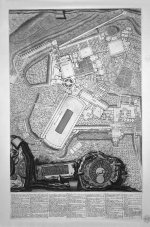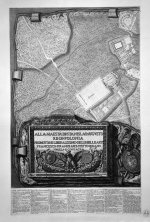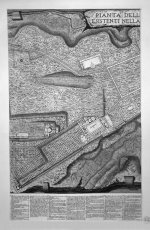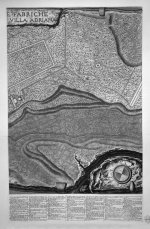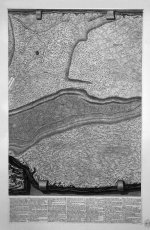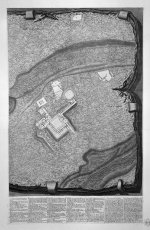When he was hired by the pope of his time (i forgot the name) to map the city of Rome, he also received a significant budget for this project. He was a professional architect, mathematician, artist and engineer. He hired a small army of surveyors and they did honest-to-god boots on the ground measurements and calculated all of it to obtain this level of accuracy. He also used the best astronomical tools of the time to measure the cardinal points correctly and find the right references to the buildings and geographical features. So one might say he was also pretty good at astronomy. He was definitely a genius of his time and it saddens me to see all these modern quakademics ridicule his work and call it fictional. Yes he did make one or two books with imaginary drawings, but he did mention so. You cannot put all of his honest architectural work in the same basket with his imaginary work and call it "SAME". That is disrespectful to a man who was way ahead of his time. I see the same thing about ancient cartographers that have drawn detailed maps of Hyperborea and Antarctica. The quackademics cannot possibly imagine a version of reality that does not fit their established views...
What strikes me stupid is not only how well he made the topographical map just with good old fashioned tools and math, but also how well he represented the height map showing us in great detail the parts of Rome that were not yet excavated at that time. Even if you know nothing about map making, you can tell those features on the east side are some kinds of mounds. My goodness, the amount of work it must have taken to excavate an entire ruined city from a blanket of over 10m of dirt is staggering. They must have been at it for 100 years. Imagine the look on the archeologit's face when his worker finally dug all the way to street level and discovered the first roman cobblestone road. His jaw must have dropped as they were still using horse carts with wooden wheels and dirt roads...
The fragments he drew on the sides were part of a large city plan that used to be the floor of one of the ruins. They only found a few intact fragments and many small illegible ones. He tried for a year to put the puzzle back together as he was fascinated by the glory of ancient Rome, just like we are, but alas he had to move on to other projects. There were too few pieces to work with. His passion for his work and his wonder about the old world comes through brilliantly in his fine work.


